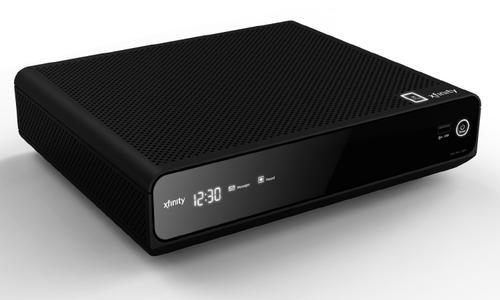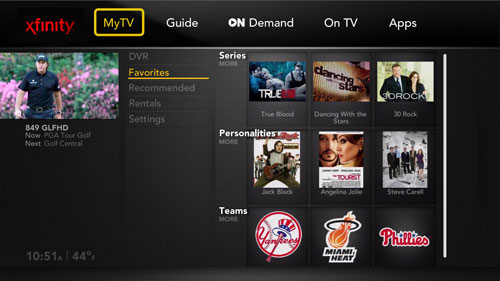Much has been made of Comcast Xcalibur, the code-named IP-based service designed to feed consumers their Internet access and video content all through a single fat pipe. In fact, the term Xcalibur has been whispered in back rooms for years, with some of us afraid to speak it out loud for fear of karmic retribution. It’s only recently, however, that Comcast has started to leak some of the details around Xcalibur for public consumption. Here’s what we know today. Consider it an advance tutorial for whatever more we may learn tomorrow when Comcast CEO Brian Roberts speaks at The Cable Show. (Live stream available tomorrow morning starting at 10:00 ET)
The Box

I first started hearing at the SCTE show last fall that Comcast was testing a Pace set-top box in the Augusta Georgia area designed to support both MPEG- and IP-based video. Since then, several sources have confirmed the information and offered further details. In addition to supporting IP video, the hardware (variously called the “Parker box” and the “Xfinity Spectrum box”) has a CableCARD slot, USB 2.0 port, IEEE 1394 connection, tru2way middleware, an Intel processor, four tuners, and between 500GB and 1TB of storage. The box is an HD DVR, which suggests use as a primary living room set-top, but its hybrid MPEG/IP nature also raises interesting possibilities related to the FCC’s AllVid initiative. While the Pace box is not meant to be a gateway in the way the FCC envisions one, it does perform a similar function – creating a terminal in the home where MPEG content can potentially be converted to IP for further networked distribution.
The Software

In public, Comcast is focusing primarily on software upgrades around Xcalibur rather than new hardware. Engadget got a major scoop early last month with the help of a tipster who had actually tested the service and could relate many of Xcalibur’s features. Comcast followed that news up a few weeks later with its own blog post highlighting Xcalibur features including a new cross-domain search engine, a personalized TV guide/interface called MyTV, and a variety of interactive apps, or widgets. As Jeff Baumgartner reports, it’s unlikely we’ll see much web video content on the new platform any time soon. It’s much more likely that Comcast is throwing IP video capabilities in the mix in order to test its own IP-delivered content.
The Infrastructure
The infrastructure part of the Xcalibur equation is the most interesting aspect by far. Although Comcast will sell its service based on things like apps and a better program guide, it’s real goal here is to test out a transition to IPTV. Not over-the-top or web video, but TV-quality IP-based video completely managed and distributed by Comcast. The Wall Street Journal reported recently that Comcast plans to test IP-based delivery of linear TV feeds on the campus of MIT in the near future. Comcast will almost certainly use DOCSIS 3.0 channel bonding in order to get the throughput it needs for the trial, but in the future it’s looking toward a Converged Multiservice Access Platform (CMAP) in order to break down the walls between video and data delivery. Comcast (and many others) envision one big IP pipe capable of delivering every kind of cable service you could possibly desire.
Click my name for my YouTube page with some of the Spectrum Video’s. The video’s are available on a XFinity spectrum FAQ page, but behind a Comcast paywall (you need a login). So for those who don’t have this, I copied it out for you.
It is a very interesting service offering and as Mari points out, no doubtingly uses a form of DSG (DOCSIS Set Top Gateway) to harvest the data intensive graphics and applications. I have a feeling that the service will continue to see improvements (perhaps YouTube access just like rival DirecTV?).
Service providers are finally starting to bring their products into this century. From Verizon Fios IMG 1.9, XFinity Spectrum, Dish Network’s ongoing refinements to the vip922 and even DirecTV is working on an HD-UI (national release slated for October… beta testing this summer).
For these companies trying to get the attention of the young, hip Gen-Y market segment, making their products look and act modern and fresh is essential. The latest customers have grown accustomed to flashy features and fancy graphical interfaces thanks to the latest smartphones, tablets and modern operating systems.
You want to prevent cord cutting, you need to provide this new ADHD generation something customizable and flashy that will catch their eye.